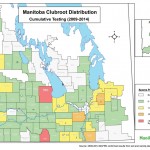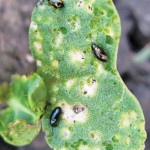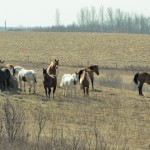
Tag Archives Manitoba Agriculture Food and Rural Development

Manitoba Crop Report and Crop Weather report: Issue 7
Conditions as of June 15

More clubroot confirmed in Manitoba, but mostly low levels
The good news — farmers can still prevent this potentially destructive canola disease from getting out of control

Canola crop succumbs to final blow with May 30 frost
A blizzard, a frost, flooding, crusting, flea beetle and another frost have prompted many Manitoba farmers to reseed their canola

Infrared technology identifies and removes fusarium-infected grain
Technology coming to Winnipeg feed mill will also provide the building blocks for a new biomass fuel

Be on the lookout for three early-season crop pests
MAFRD entomologist John Gavloski has advice on flea beetles, cutworms and wireworms for Manitoba farmers

Big bales don’t cut it when it comes to horse hay
Horse industry buys more forage than any other livestock sector, but buyers have exacting criteria

CFIA blames wild birds for spread of avian influenza
While there are no new cases of bird flu in Canada, the Canadian Food Inspection Agency says it’s still too early to breathe a sigh of relief

Clubroot resistance collapses for canola in Alberta
Be proactive about prevention

Phosphorus acid a strong option for disease control in potatoes
Both foliar or post-harvest application are options, depending on circumstances

Manitoba Crop Report and Crop Weather report: Issue 1
Conditions as of May 3, 2015


